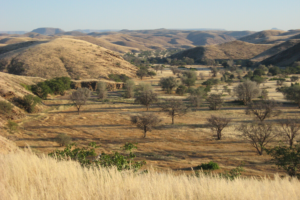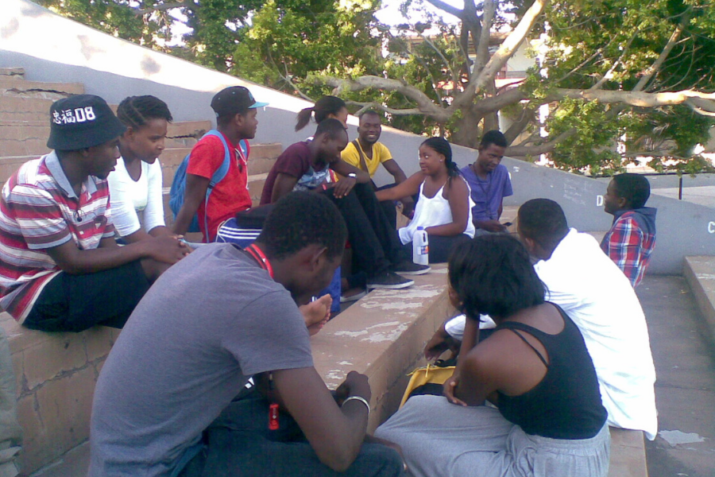
WILDERNESS THERAPY NAMIBIA ORIGINATES THROUGH THE QUESTION:
HOW TO REACH TROUBLED YOUTH:
An increasing number of youth with at risk behaviour, in schools have no or little support in dealing with their distresses. The traditional way of helping them through counselling and therapy was hampered by the youth not attending the sessions and an unwillingness to communicate about their situations. The stigma and judgemental connotation on seeing therapists as well as distrust in adults do not make it easy for youth to communicate
HOW WTN MEET THE NEED
Building Relationships: To build a relationship with troubled youth you need to win their trust. Therefor they needed a program to mobilize their adventurous spirit to inspire them and motivate them to change their destructive behaviour patterns out of their own free will.
Participation in the therapeutic process: The WTN Program offers an opportunity for the youth who are at risk of emotional and behaviour difficulties, which cannot be reached through traditional therapeutic methods to participate in a powerful learning experience, which facilitates change, gives them a platform of support and assists them to reach their full potential.
Rites of passage: Wilderness-
1. Wilderness Therapy Hiking
Wilderness Therapy Namibia takes place in the wilderness settings of the Naukluft Park, the Fish River Canyon Park and on private farms in the Khomas Hochland, Namibia.
Wilderness means an unfamiliar outdoor setting with no distraction or influence from the environment or society the participants came from. The participants are separated from the known and exposed to the unfamiliarity of wilderness and what it has in store. Exposure to nature’s elements, sleeping in the open, wild and dangerous animals, and the uncertainty of finding water, digging for water (gorras), silence and primitive living are part of the experience.
no distraction or influence from the environment or society the participants came from. The participants are separated from the known and exposed to the unfamiliarity of wilderness and what it has in store. Exposure to nature’s elements, sleeping in the open, wild and dangerous animals, and the uncertainty of finding water, digging for water (gorras), silence and primitive living are part of the experience.
Being in the wilderness had a cleansing effect and made the participants susceptible. The healthy and unpolluted environment helped to clean body, mind and soul. The fresh air, fresh water and the physical exercise, helped the participants to feel better about themselves. The wilderness environment is vast and open. There is silence and peace. The wilderness has a calming effect on those who visit it. Nature comforts and gives peace. The sense of peace and belonging that nature gives can be very healing.
As there were fewer distractions in the wilderness than the typical continuous noise and visuals at home, gave the participants the opportunity to focus on themselves and to reflect on their lives. The participants connect with themselves and became aware of their own feelings.
Hiking is the physical challenge the participants are exposed to during the eight (8) days. The participants had to hike ± 120 km on strenuous terrain carrying a backpack on their backs with all the requirements for eight (8) days. Physical fitness is a therapeutic factor in wilderness therapy and the benefit of physical exercise can be very therapeutic.
Hiking is physically, mentally and emotionally challenging. The manner in which pressure or coping skills or lack thereof is handled becomes exposed during the hiking process. The participants have to motivate themselves to continue walking; to quit or to refuse to walk is out of the question because there is nowhere else to go.
The using of the therapy techniques like play-
Safety arrangements in regards to the hike
Trained therapeutic facilitators with hiking – outdoor experience take care of the emotional, physical, spiritual, social and mental safety of the participants to ensure an optimal learning and personal growth experience.
Volunteer assistant facilitators with hiking-
Rescue plan: In case of emergency, rescue co-
2. Aftercare Mentoring


Mentoring within Wilderness Therapy Namibia refers to the process of guidance, encouragement and support of youth to self-
It is within our (adults/community) capacity to develop healthy, positive and beneficial relationships with the youth in order that they become responsible, integrated and well-
A. Career Guidance
Uncertainty, but also idealistic (and some unrealistic) dreams about their future are the mixed feelings our students experience in their last school years. One of the aims of Wilderness Therapy Namibia is to help our students to make informed career choices. They receive information and are exposed to different career options. Research and potentially job shadowing is also part of the learning process. They also receive guidance to make career choices that matches their personality, skills and values. The importance of fulfilment of your life’s purpose versus making money is also brought to their attention.
Making a career choice in the ever changing environments of jobs is an overwhelming task. Career development is a lifelong process. Throughout your life you will change, situations will change, and you will continually have to make career and life decisions. The goal of the Career Week is to not only help our students to make the decisions they need to make now, but to give them the knowledge and skills they need to make future career and life decisions.
B. Community Service
Benefits of community service: Young people involved in community service are more likely to have a strong work ethic as an adult.
Compassion: Through exposure to other people who are in need or helpless our students realise that they are able to and have the skills and compassion to help others. Through helping others in need their self-
C. Parental Capacity Building
The Parental Capacity Building Programme aims to assist beneficiaries to become responsible and mature adults and future parents. The first steps to a bright future are to provide a better future for their children, thus WTN capacitates the beneficiaries. Topics related to family life covered during this are: Health, Nutrition, Early learning and stimulation, Child Protection and welfare, Family planning, Involving and empowering parents, risky sexual behaviour and promiscuity, Laws and Policies regarding children, gender based violence, substance abuse etc.
D. Youth Conference
The Youth Conference/Reunion is a highlight for our students as it gives them the opportunity to revisit their hiking– and mentoring-
E. Special Adventure and educational events:
Beneficiaries are exposed to new acceptable activities to stimulate their interest. The aim is to boost their self-
F. Educational Tour:
The educational tour further stimulates the participants and broadens their horizons. The tour is for the beneficiaries demonstrating remarkable growth and improvement throughout the 18 month mentoring programme. The tour will be held in places like Gobabeb, Etosha, Swakopmund or a student exchange with the partner in RSA.